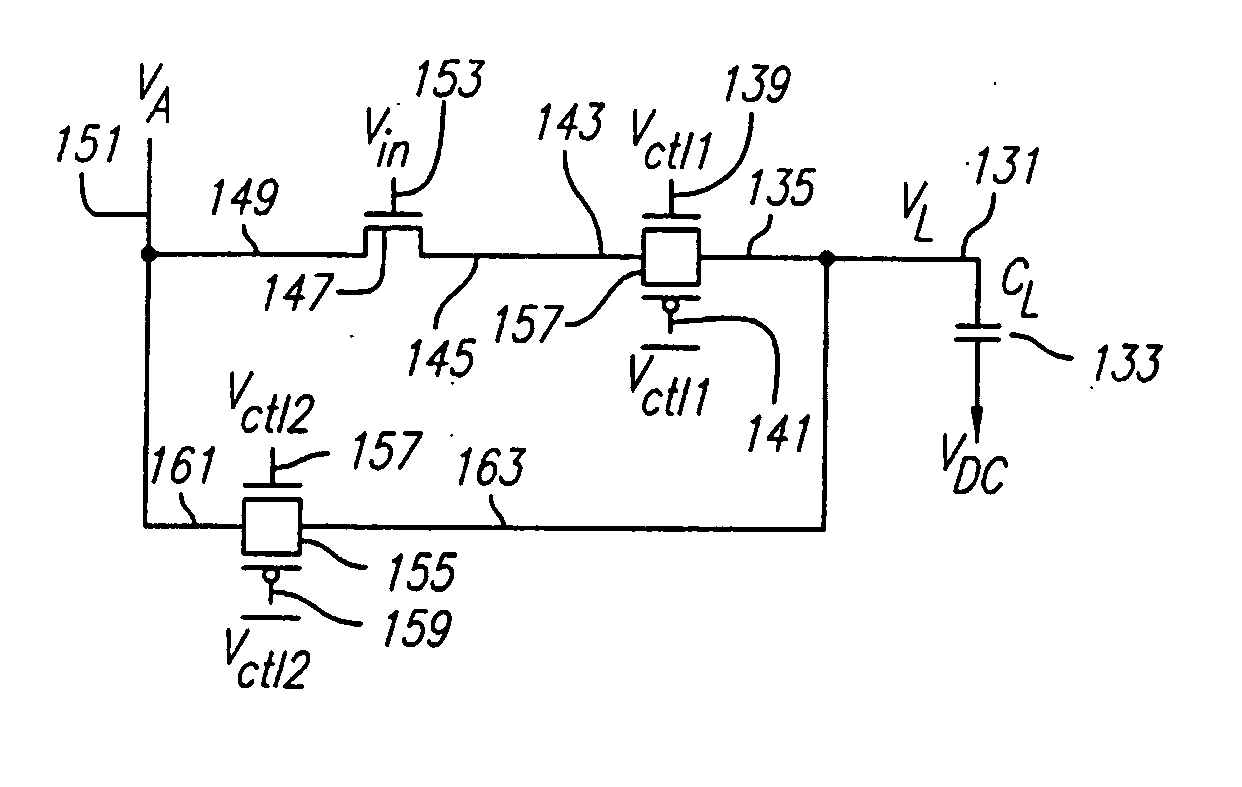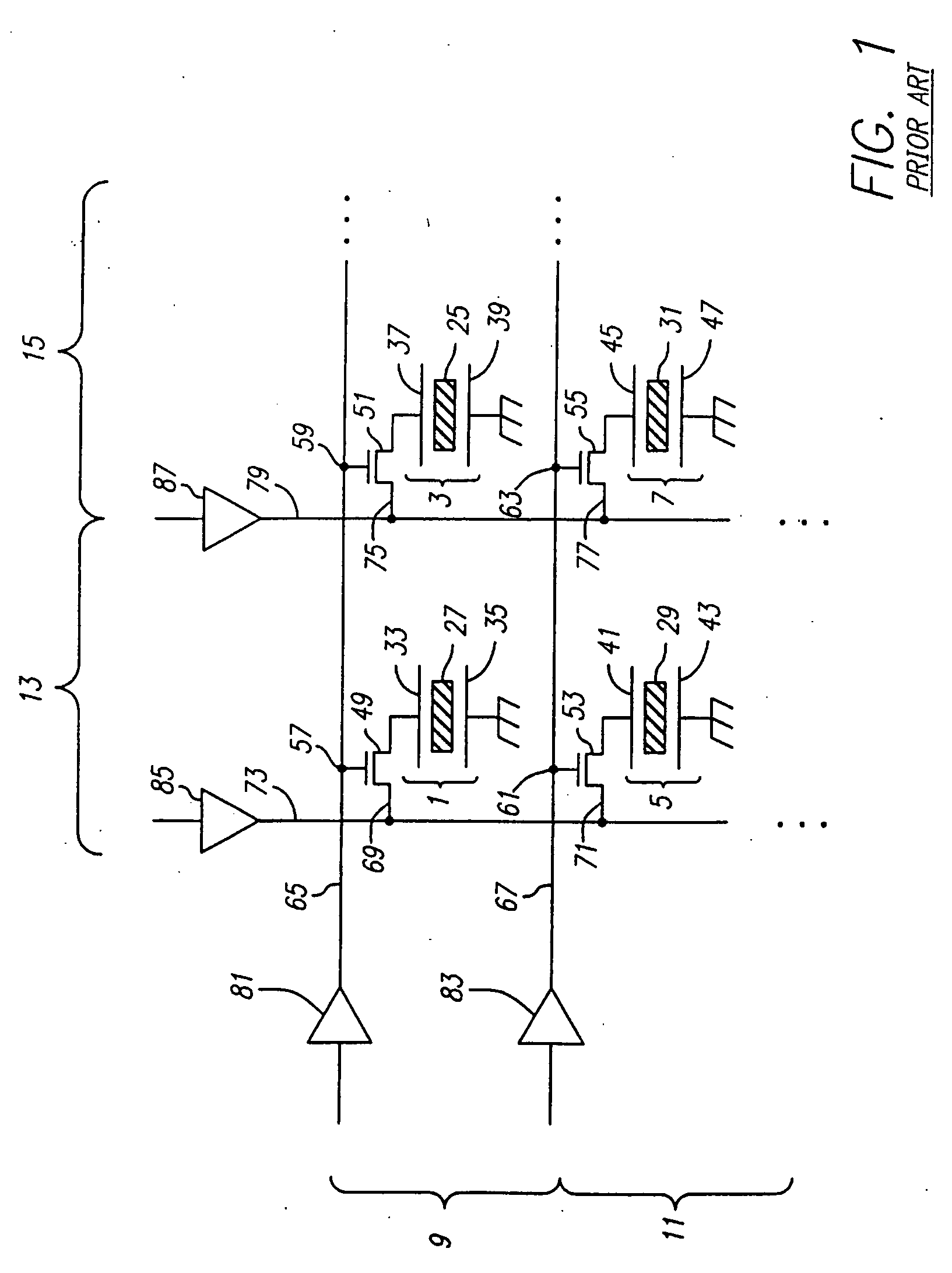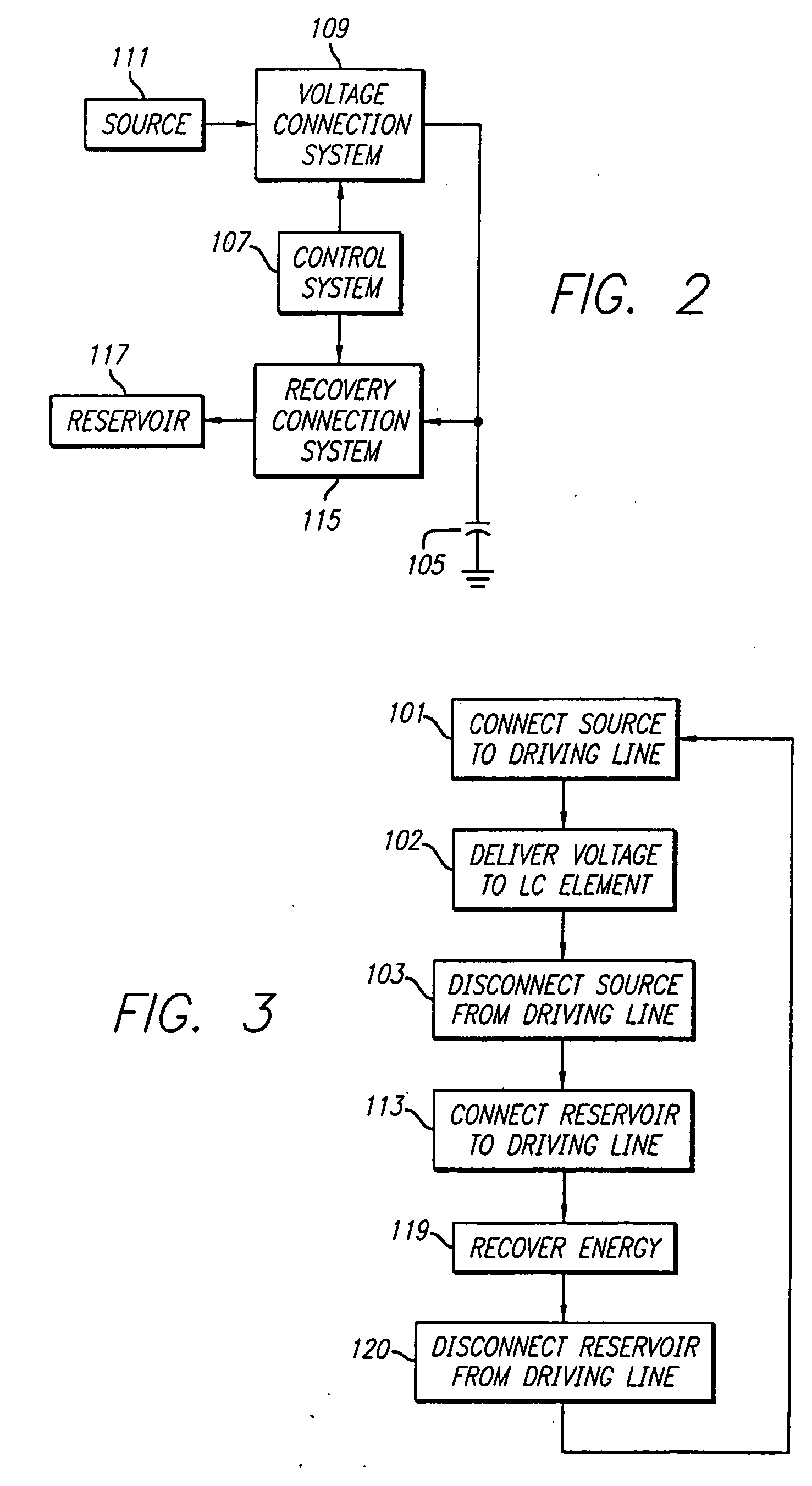Power-efficient, pulsed driving of capacitive loads to controllable voltage levels
- Summary
- Abstract
- Description
- Claims
- Application Information
AI Technical Summary
Benefits of technology
Problems solved by technology
Method used
Image
Examples
Embodiment Construction
[0049]FIG. 1 illustrates a portion of a typical prior art LCD.
[0050] As shown in FIG. 1, the LCD includes a plurality of LC elements arranged in rows and columns, such as LC elements 1, 3, 5 and 7 arranged in rows 9 and 11 and columns 13 and 15.
[0051] As is well known, each LC element includes liquid crystal material, such as liquid crystal materials 25, 27, 29 and 31, sandwiched between a set of plates, such as plates 33 and 35, plates 37 and 39, plates 41 and 43, and plates 45 and 47, respectively. The amount of light which is permitted to pass through each element is directly related to the voltage that is placed across the plates surrounding each liquid crystal material.
[0052] As is also well known, there are many types of LCDs, including active-matrix, thin-film-transistor (“AMTFT”) panel types and passive-matrix, super-twisted nematic (“PMSTN”) panel types. Some LCDs, moreover, include backlighting, while others do not.
[0053] There is also a broad variety of techniques use...
PUM
| Property | Measurement | Unit |
|---|---|---|
| Time | aaaaa | aaaaa |
| Electric potential / voltage | aaaaa | aaaaa |
| Energy | aaaaa | aaaaa |
Abstract
Description
Claims
Application Information
 Login to view more
Login to view more - R&D Engineer
- R&D Manager
- IP Professional
- Industry Leading Data Capabilities
- Powerful AI technology
- Patent DNA Extraction
Browse by: Latest US Patents, China's latest patents, Technical Efficacy Thesaurus, Application Domain, Technology Topic.
© 2024 PatSnap. All rights reserved.Legal|Privacy policy|Modern Slavery Act Transparency Statement|Sitemap



